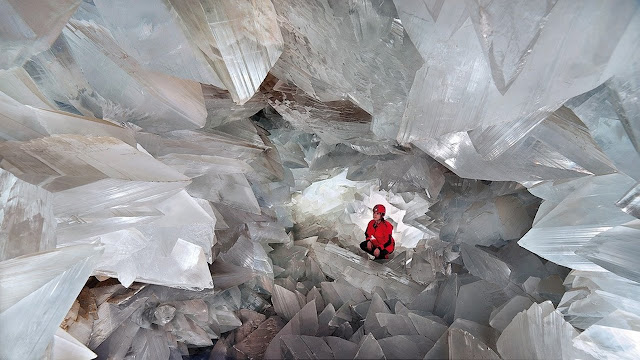Science is Fun Fridays!
The Pulpi geode is the 2nd largest in the world, but the largest that can be visited.
Located in Almeria, Spain, it was found in 1999 by the Madrid Mineralogist Group.
It is considered a worldwide phenomenon not just for it's size, but the transparency and perfection of the plaster crystals. It is estimated that the crystals are in an age range from 2 million to 60,000 years old.
The formation is a mixed karski-hydrothermal process by which, first the dissolution of dolomite was produced, and then the gypsum crystals formed with the injection of hydrothermal waters from the volcanic activity of Cabo de Gato.
The Naica crystals in Mexico are the largest in the world. It was discovered by miners in 2000.
The cave is located on a fault above an underground magma chamber. The magma heated groundwater that was saturated with sulfide ions. Oxygen slowly diffused into the hot water and oxidized the sulfides to sulfates, which precipitated as anhydrite. When the general temperature in the cave dropped, the anhydrite crystals dissolved and formed selenite crystals.
The cave is still incredibly warm, and very humid, which is why it is not as visitable as Pulpi.
Not selenite, but our local Crystal Peak has some nice hunks of quartz.






Comments
Post a Comment